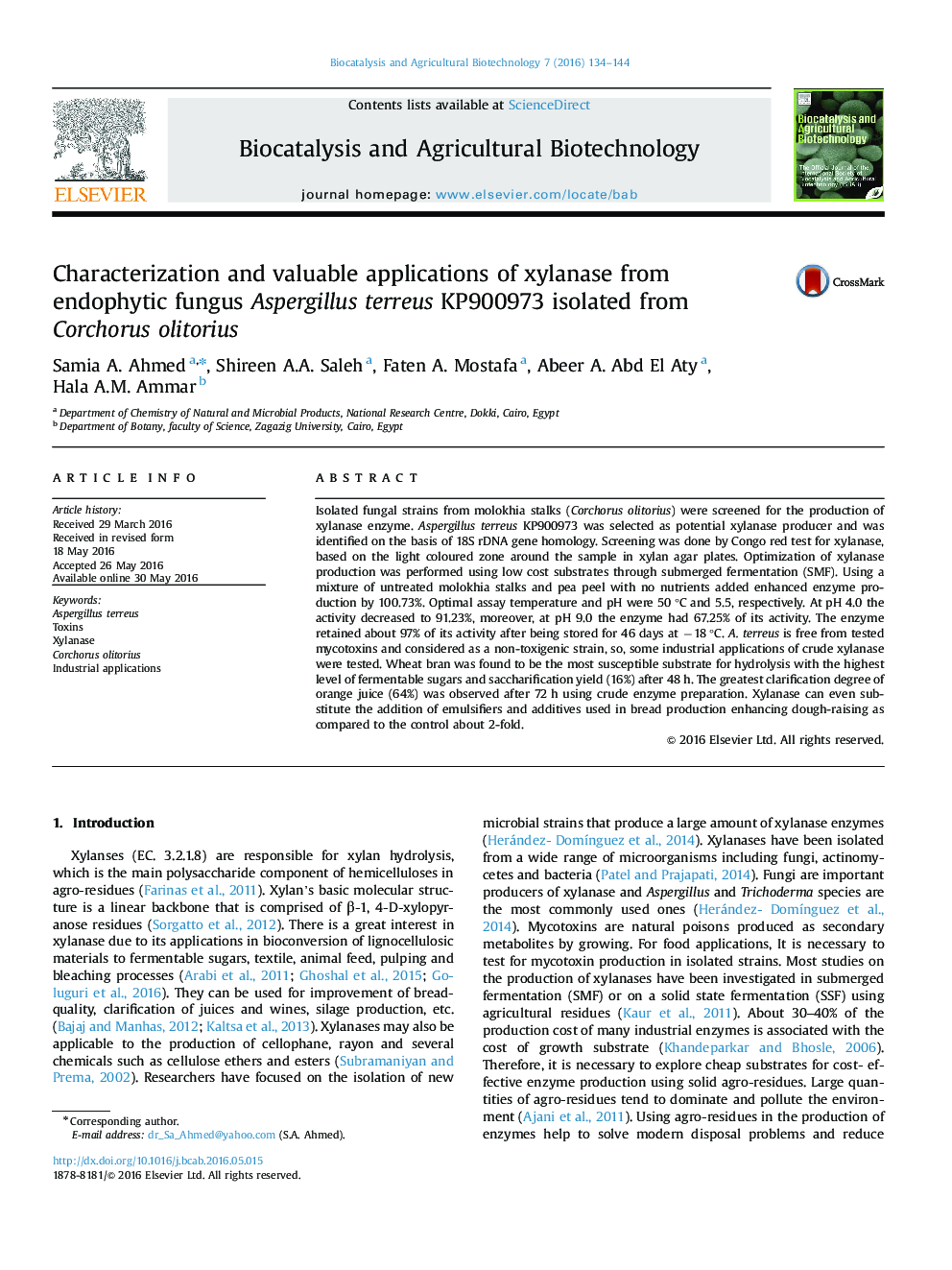| Article ID | Journal | Published Year | Pages | File Type |
|---|---|---|---|---|
| 2075635 | Biocatalysis and Agricultural Biotechnology | 2016 | 11 Pages |
Isolated fungal strains from molokhia stalks (Corchorus olitorius) were screened for the production of xylanase enzyme. Aspergillus terreus KP900973 was selected as potential xylanase producer and was identified on the basis of 18S rDNA gene homology. Screening was done by Congo red test for xylanase, based on the light coloured zone around the sample in xylan agar plates. Optimization of xylanase production was performed using low cost substrates through submerged fermentation (SMF). Using a mixture of untreated molokhia stalks and pea peel with no nutrients added enhanced enzyme production by 100.73%. Optimal assay temperature and pH were 50 °C and 5.5, respectively. At pH 4.0 the activity decreased to 91.23%, moreover, at pH 9.0 the enzyme had 67.25% of its activity. The enzyme retained about 97% of its activity after being stored for 46 days at −18 °C. A. terreus is free from tested mycotoxins and considered as a non-toxigenic strain, so, some industrial applications of crude xylanase were tested. Wheat bran was found to be the most susceptible substrate for hydrolysis with the highest level of fermentable sugars and saccharification yield (16%) after 48 h. The greatest clarification degree of orange juice (64%) was observed after 72 h using crude enzyme preparation. Xylanase can even substitute the addition of emulsifiers and additives used in bread production enhancing dough-raising as compared to the control about 2-fold.
